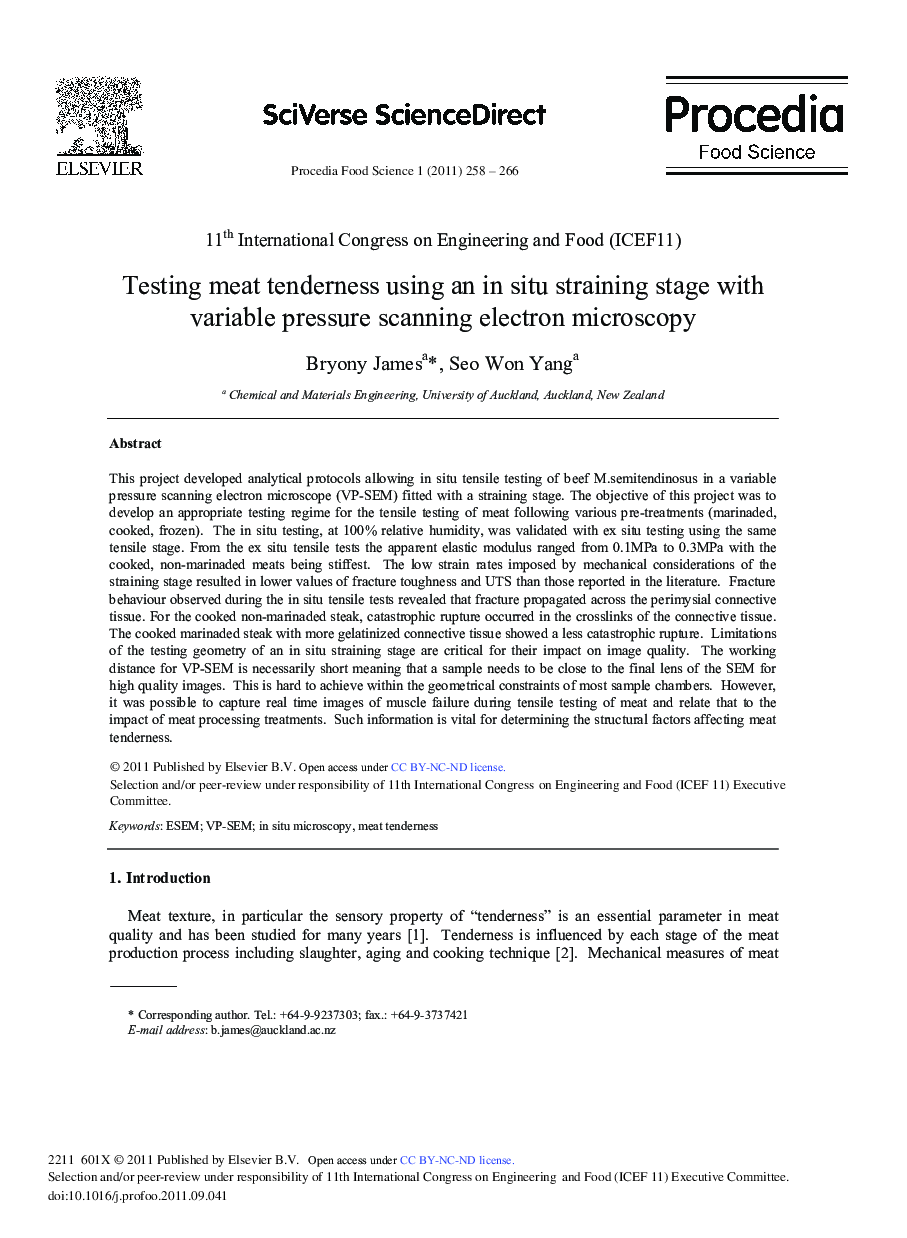| Article ID | Journal | Published Year | Pages | File Type |
|---|---|---|---|---|
| 1264949 | Procedia Food Science | 2011 | 9 Pages |
This project developed analytical protocols allowing in situ tensile testing of beef M.semitendinosus in a variable pressure scanning electron microscope (VP-SEM) fitted with a straining stage. The objective of this project was to develop an appropriate testing regime for the tensile testing of meat following various pre-treatments (marinaded, cooked, frozen). The in situ testing, at 100% relative humidity, was validated with ex situ testing using the same tensile stage. From the ex situ tensile tests the apparent elastic modulus ranged from 0.1 MPa to 0.3 MPa with the cooked, non-marinaded meats being stiffest. The low strain rates imposed by mechanical considerations of the straining stage resulted in lower values of fracture toughness and UTS than those reported in the literature. Fracture behaviour observed during the in situ tensile tests revealed that fracture propagated across the perimysial connective tissue. For the cooked non-marinaded steak, catastrophic rupture occurred in the crosslinks of the connective tissue. The cooked marinaded steak with more gelatinized connective tissue showed a less catastrophic rupture. Limitations of the testing geometry of an in situ straining stage are critical for their impact on image quality. The working distance for VP-SEM is necessarily short meaning that a sample needs to be close to the final lens of the SEM for high quality images. This is hard to achieve within the geometrical constraints of most sample chambers. However, it was possible to capture real time images of muscle failure during tensile testing of meat and relate that to the impact of meat processing treatments. Such information is vital for determining the structural factors affecting meat tenderness.
